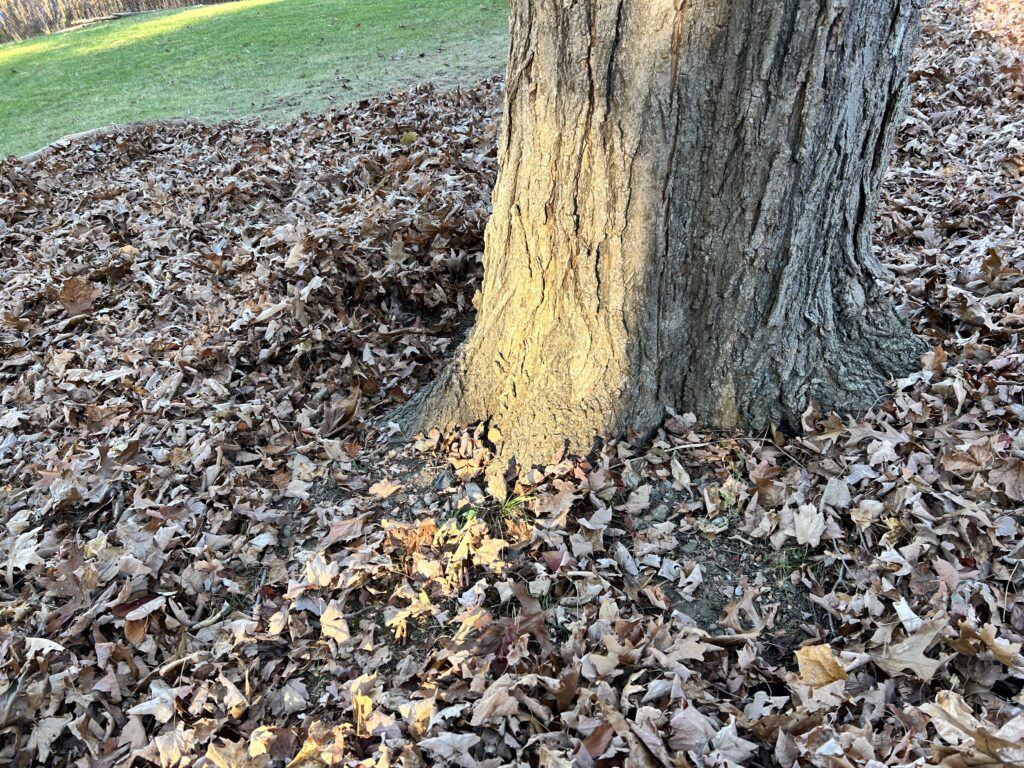As you know, we are in a drought which is stressing our garden plants. According to Dave Epstein of WGBH Radio, since September we have had only 2.24 inches of rain. Be sure to water the evergreens well once a week and especially newly planted trees and shrubs until hopefully we get some rainfall.
DECIDE WHICH PLANTS TO DONATE TO THE CLUB’S PLANT SALE IN MAY OF 2025, MARK THOSE PLANTS FOR DIVIDING AND DIGGING.
Number “Marking Flags” (purchased at a hardware store) and record the name of the plant with the corresponding number.
November is your last opportunity for planting spring flowering bulbs.
Fall is not the time to prune woody plants other than pruning-out diseased or dead branches. Wait until early spring to prune Rhododendrons, Forsythias, Azaleas, and Lilacs. If spring flowering plants are pruned now, the flower buds for next year will be cut off. Prune these shrubs after flowering next spring.
Clean out and remove debris, diseased, and dead plants from vegetable gardens and herbaceous borders. Insect and disease infected plants should be removed as these insect and disease pests often over-winter in plant debris. Try to balance how much you take out of the garden to support pollinators and wildlife that overwinter in fallen leaves, brush piles, and unmowed areas.
Continue to water trees and shrubs until the ground freezes. Drain irrigation systems, hoses, and any other watering equipment. Clean the leaves from gutters. Empty or move containers under cover to prevent them from cracking when the soil freezes.
Early November is a good time to fertilize your lawns, especially if you didn’t do it in September. Fertilizing in late fall promotes the development of deep root systems without an excess of shoot growth. With this late fall application, early spring fertilizing will not be necessary.

Don’t bag and remove the fallen leaves; they contain a wealth of nutrients. Chop or run over them with a lawn mower and distribute them around trees and shrubs. This valuable plant material improves the soil structure. Once the ground freezes, apply 2-3 inches of this organic mulch around woody plants, keeping it a few inches from stems and trunks of trees.

Don’t mulch roses and herbaceous perennials for winter protection until the ground freezes to at least a ¼ inch depth. The purpose of mulching is to keep the soil temperature as uniform as possible to help prevent freezing and thawing. A 3-4 inch layer of mulch is all that’s needed. Pine needles, pine boughs, straw, salt marsh hay or shredded oak leaves can be used. Avoid the use of hay, which may contain seeds.
Apply anti-desiccant late in the month to protect vulnerable broadleaf evergreens against winter damage.
Apply deer repellent to favored shrubs such as yew, holly, and rhododendron to discourage winter browsing.
Avoid storing firewood indoors, as it may be a source of insects through the winter. Most would not be injurious to your home but may be a nuisance as they crawl or fly about.
Be sure to winterize all power tools after the gardening chores are finished this fall. Clean and sharpen hand tools. This assures proper winter storage and you can avoid the spring rush.
Now is a great time to decide what worked well in the garden and what didn’t. Take notes for next year for transplanting, dividing, and new projects.
Garden club bonus, overwintering plants in pots
This article, from 2021, written by Kerry Ann Menendez, contains tips that might still be useful.
“I round up all the pots, keeping them watered, and then in early November I cut back the perennials. I leave the shrubs and small trees untouched, other than to prune off any wingnut branches. I continue to water the pots (perhaps once a week depending on the weather) until the temperatures drop into the 30’s. Then I lay the shrubs and trees on their sides next to the perennials and cover the pots with chicken wire (1/2 inch squares) or hardwire to keep critters out. Finally, I cover everything with a large tarp, anchor it with rocks, and sweetly say good night to my treasure trove. Sometime in March, I remove the tarp, leaving the chicken wire in place. I also stand shrubs and trees upright. I start watering pots after the soil begins to thaw. Once the perennials break dormancy and show a flush of foliage, I remove the chicken wire. I have been overwintering pots this way for more than 20 years in hardiness zones 4 and 5 with great success. I have also overwintered plants in my unheated garage and shed with similar results.”
Judy Dembsey is the chair of environmental education and a member of the board of the Acton Garden Club.
